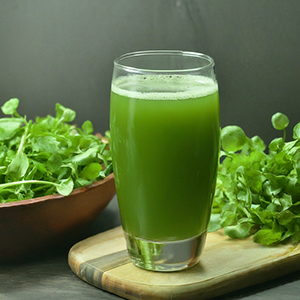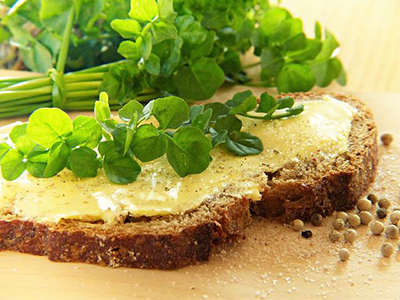Contents
You can get the many watercress benefits by eating healthy and cheap salads prepared from wild vegetables. Watercress combines well with dandelion, sorrel, and nettle. A meal like this is more fitting on a day outing than an instant soup heated on a portable stove, a tin of sardines, or a sandwich.
- PURE Watercress Capsules are filled with a single ingredient, providing a pure undiluted supplement
- Watercress is a natural source of phytonutrients
- 50 Day supply: Almost 2 months of peak health support
Enjoying nature requires knowledge, and the inhabitants of towns must acquire such knowledge. There is a Spanish saying, “Those people gathering watercress, take care of monkshood.” The monkshood plant also grows near clear waters and is one of the most poisonous plants. Fortunately, it is not difficult to distinguish from watercress.
The sentence, however, should have referred to other plants much more similar to watercress. The Helosciadium nodiflorum is taller than the watercress. It has larger, light green leaves, flowers grow in umbels (flower clusters), and a flavor not as tasteful as watercress. Moreover, it is a toxic plant.

Scientific Facts
- Scientific Name – Nasturtium officianalis R. Br.
- Other Names – Scurvy grass, tall nasturtium.
- French – Cresson.
- Spanish – Berro, mastuerzo de agua.
- Environment—It grows close to springs and brooks of clear, fresh water, disliking reservoirs. It is widespread in Europe and America, where up to five different varieties are known.
- Description—A climbing plant of the Cruciferae family, it has intense green leaves and small, white flowers. Its flavor resembles mustard, though less spicy.
- Parts of the plant used medicinally – The leaves and young stems.
Watercress Benefits

Watercress contains gluconasturtiin (a sulfur glycoside), iodine, iron, a bitter component, and vitamins A, C, and E. These are the main watercress benefits:
- Blood depurative and diuretic: Recommended for gout, arthritis, obesity, and when the diet is rich in meat and fats.
- Invigorating: Watercress has a soft stimulant effect on all metabolic functions. It is an appetizer and activates metabolism since it provides essential amounts of vitamins A, C, and E and minerals such as iodine and iron. This makes watercress helpful in helping overcome asthenia (weakness) states caused by a lack of vitamins or minerals.
- Expectorant: Due to its content of essential sulfured oils, it promotes expectoration and relieves the congestion of the respiratory system. People suffering from bronchial disorders or emphysema can take advantage of its properties.
- Cicatrizant: The Poultice of watercress applied on torpid wounds or sores enhances the formation of new skin. They also regenerate the skin for eczema, acne, and dermatosis. When applied to the scalp, they prevent hair loss.
Warning

Pregnant women should abstain from watercress because of its probable abortifacient effect. Consuming high amounts of watercress is not recommended since it can irritate the stomach. Plants with flowers or fruits should not be used because they are too strong.
How to use Watercress
- Raw: Watercress may become toxic when trying to pressure it. Thus, it is better to eat it young and fresh. Wash it carefully before consuming it, or keep it in salt water for half an hour since it may house tiny larvae.
- Juice: Drink half a glass, sweetened with honey, each meal.
- Poultices: 100 grams of fresh watercress mashed in a mortar, preferably wood, applied to the affected areas, wrapped in gauze.
- Lotions: Apply the juice directly to the skin.
DISCLAIMER: All content on this website is presented solely for educational and informational objectives. Do not rely on the information provided as a replacement for advice, diagnosis, or treatment from a qualified medical expert. If you are pregnant, nursing, or have any preexisting medical concerns, talk to your doctor before using any herbal or natural medicines.
REFERENCES
- George D. Pamplona-Roger, M.D. “Encyclopedia of Medicinal Plants.” George D. Pamplona-Roger, M.D. Encyclopedia of Medicinal Plants. Ed. Francesc X. Gelabert. Vols. 1 San Fernando de Henares: Editorial Safeliz, 2000. 270, 271. Print. [watercress benefits]
- https://www.ncbi.nlm.nih.gov/pmc/articles/PMC3126488/
- https://www.health.com/watercress-7642897
- https://www.ncbi.nlm.nih.gov/pmc/articles/PMC6257730/
Last update on 2025-06-04 / Affiliate links / Images from Amazon Product Advertising API





